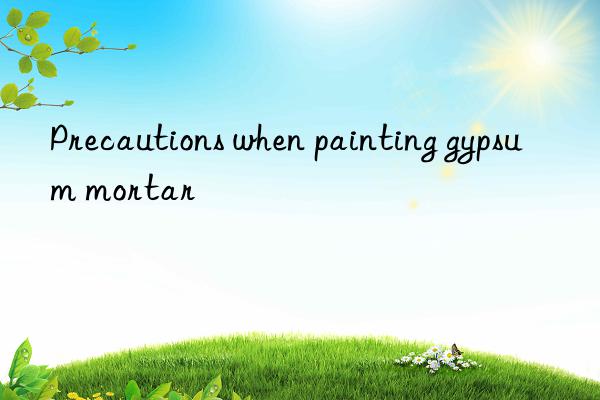
Stucco gypsum mortar is mainly composed of cementitious materials, retarder, sand, and rubber powder. It has high strength and good water resistance, and can effectively prevent cracking and hollowing. Let's take a look at the advantages and disadvantages of stucco gypsum mortar and what should be paid attention to during use? Stucco gypsum mortar uses semi-hydrated gypsum as the basic material, high molecular polymer as the cementing material, and the inorganic filler is dry-mixed. It is a new type of improved interior wall painting material, which changes the habit of using cement-based cementing material. It has good compatibility and adhesion with various base walls. The construction quality of gypsum mortar directly affects the use, habitability, safety and reliability of the house structure. In the construction of gypsum mortar, we strictly control the construction quality and conscientiously implement the construction specifications and standards set by local, national and enterprise standards to ensure that they are implemented in construction production.
The stucco slurry has high strength and good water resistance. It can effectively prevent hollowing and cracking and can significantly reduce costs. Used in different construction methods and different wall surfaces, the setting time can be adjusted. The product is equipped with cement-based composite materials, and the strength can reach light cement mortar. The stucco gypsum is divided into two products: bottom layer and surface layer. The bottom layer is used for rough For wall leveling, the surface layer is used for fine leveling of the wall.
Advantages of plastering gypsum mortar: good adhesion, used on a variety of substrates, light weight, good construction operability, less dust on the ground, condensation and hardening blocks, saving construction period, small drying shrinkage, no It is easy to hollow out and crack, has good fire prevention function, can adjust indoor humidity, has low cost, is green and environmentally friendly, has good energy-saving effect, is crack-resistant, soundproof and heat-insulating, can automatically adjust indoor humidity, and has a breathing function.
Disadvantages of plastering gypsum slurry: The mortar takes a long time and workers need to adjust their construction habits.
Precautions for plastering gypsum mortar:
1. The plastering should not be affected by moisture during storage and transportation. The storage time should not be too long. In principle, it should be used within three months. , if any lumps are found during use, they should be sieved before use.
2. The initial setting time of plaster gypsum mortar usually takes about one hour, and the complete setting time is about four hours. Therefore, when mixing gypsum mortar, do not mix too much ash and avoid adding water during use. The use of secondary mixing reduces the strength of the stucco gypsum slurry, causing great losses.
3. After construction is completed, the remaining gypsum mortar on doors, windows, water and electrical pipes, structural layers, etc. must be promptly cleaned to strengthen the protection of finished products and keep the room dry and ventilated.
4. Plaster plaster is only suitable for indoor dry environments. It is strictly prohibited to use bathroom and kitchen lights in humid environments.
This article introduces the advantages and disadvantages of plaster gypsum mortar and what should be paid attention to during use. Everyone should know more about plaster gypsum mortar. During the construction process, we must pay attention to the solidification of the mixed slurry. Use it before use, otherwise, problems may easily occur later. </p

 微信扫一扫打赏
微信扫一扫打赏

